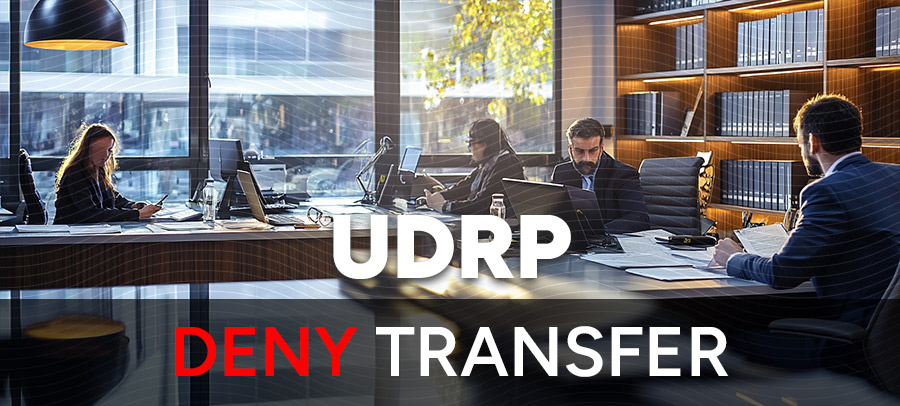Ignis Growth, S.L.U. filed a UDRP against the domain ignis.com, asserting trademark rights and alleging bad faith registration. The Complainant cited marks like IGNIS ENERGIA and a newly registered U.S. mark for IGNIS to support its claim. It also pointed to high-value sales outreach as evidence the domain was acquired to profit off its brand.
The Respondent argued the domain was acquired in September 2022, prior to the Complainant’s trademark filings, as part of a generic domain investment strategy. “Ignis,” Latin for “fire,” was shown to be a common, descriptive term used by many unrelated parties.
The three-member panel at the WIPO found the domain identical to Complainant’s trademark but rejected claims of bad faith or lack of legitimate interest. The Respondent’s explanation of acquiring the domain for its generic value was found credible. The panel ruled that no targeting occurred and that ownership predated the Complainant’s rights.
One panelist asked for a finding of Reverse Domain Name Hijacking:
The majority of the Panel concluded its analysis by noting that although it “views the Complaint as an overreach or a long shot, [it was] not an abuse of the Policy.” It is precisely because the Complaint is an “overreach and a long shot” that RDNH is appropriate. The Complainant offered not even a shred of evidence that the Respondent violated the UDRP.
Final decision: The transfer of the domain Ignis.com was denied. A split panel (2:1) declined to find Reverse Domain Name Hijacking.

Copyright © 2025 DomainGang.com · All Rights Reserved.ARBITRATION AND MEDIATION CENTER – ADMINISTRATIVE PANEL DECISION
Ignis Growth, S.L.U. v. Michael Bilde
Case No. D2025-13481. The Parties
The Complainant is Ignis Growth, S.L.U., Spain, represented by PONS IP, Spain.
The Respondent is Michael Bilde, Denmark, represented by Cylaw Solutions, India.
2. The Domain Name and Registrar
The disputed domain name ignis.com is registered with Dynadot Inc (the “Registrar”).
3. Procedural History
The Complaint was filed with the WIPO Arbitration and Mediation Center (the “Center”) on April 3, 2025. On the same day, the Center transmitted by email to the Registrar a request for registrar verification in connection with the disputed domain name. Also on April 6, 2025, the Registrar transmitted by email to the Center its verification response disclosing registrant and contact information for the disputed domain name which differed from the named Respondent (Unknown Registry Domain ID: 3590508_DOMAIN_COM-VRSN) and contact information in the Complaint.
The Center sent an email communication to the Complainant on April 14, 2025, providing the registrant and contact information disclosed by the Registrar, and inviting the Complainant to submit an amendment to the Complaint. The Complainant filed an amended Complaint on April 15, 2025.
The Center verified that the Complaint together with the amended Complaint satisfied the formal requirements of the Uniform Domain Name Dispute Resolution Policy (the “Policy” or “UDRP”), the Rules for Uniform Domain Name Dispute Resolution Policy (the “Rules”), and the WIPO Supplemental Rules for Uniform Domain Name Dispute Resolution Policy (the “Supplemental Rules”).
In accordance with the Rules, paragraphs 2 and 4, the Center formally notified the Respondent of the Complaint, and the proceedings commenced on April 25, 2025. In accordance with the Rules, paragraph 5, the due date for Response was May 15, 2025. The Response was filed with the Center on May 13, 2025.
The Center appointed Lynda M. Braun, Gerald M. Levine, and Evan Brown as panelists in this matter on May 28, 2025. The Panel finds that it was properly constituted. Each member of the Panel has submitted the Statement of Acceptance and Declaration of Impartiality and Independence, as required by the Center to ensure compliance with the Rules, paragraph 7.
4. Factual Background
The Complainant is in the energy business. It owns the trademark IGNIS and several variations of that mark (e.g., IGNIS ENERGIA), for which it enjoys the benefits of registration in various jurisdictions around the world. For example, it owns United States of America Registration No. 7,603,899 for the mark IGNIS, registered on December 17, 2024.
According to the WhoIs records, the disputed domain name was registered on May 29, 1997. The Complainant asserts that the Respondent acquired the disputed domain name on October 13, 2022. The Respondent asserts that the disputed domain name was lawfully acquired on September 6, 2022. The Respondent has used the disputed domain name to display a message that the disputed domain name is for sale.
5. Parties’ Contentions
A. Complainant
The Complainant contends that the disputed domain name is identical or confusingly similar to the Complainant’s trademark; that the Respondent has no rights or legitimate interests in respect of the disputed domain name; and that the disputed domain name was registered and is being used in bad faith.
B. Respondent
The Respondent asserts that the disputed domain name was lawfully acquired on September 6, 2022, prior to any trademark rights held by the Complainant in the standalone term “IGNIS” as part of a legitimate domain name investment strategy focused on acquiring meaningful, dictionary or Latin-derived words. The Respondent argues that “ignis” is a common Latin word meaning “fire,” used widely and descriptively by unrelated third parties, and that he neither knew of nor targeted the Complainant at the time of acquisition. The Respondent denies any bad faith registration or use, maintaining that the disputed domain name was acquired without reference to the Complainant’s brand or rights, and that any subsequent offer for sale, including an unsolicited outreach by BrandBucket, does not invalidate the Respondent’s legitimate interest or constitute bad faith under the Policy. Accordingly, the Respondent contends that the Complaint is both legally and factually deficient under all three elements of the Policy and amounts to Reverse Domain Name Hijacking.
6. Discussion and Findings
To succeed, the Complainant must demonstrate that all of the elements listed in paragraph 4(a) of the Policy have been satisfied: (i) the disputed domain name is identical or confusingly similar to a trademark or service mark in which the Complainant has rights, (ii) the Respondent has no rights or legitimate interests in respect of the disputed domain name, and (iii) the disputed domain name has been registered and is being used in bad faith. The Panel finds that the Complainant has satisfied the first element but not the second and third elements of the Policy.
A. Identical or Confusingly Similar
This first element functions primarily as a standing requirement. WIPO Overview 3.0, section 1.7. The standing (or threshold) test for confusing similarity involves a reasoned but relatively straightforward comparison between the complainant’s trademark and the disputed domain name. Id. This element requires the Panel to consider two issues: first, whether the Complainant has rights in a relevant mark; and second, whether the disputed domain name is identical or confusingly similar to that mark.
A registered trademark provides a clear indication that the rights in the mark shown on the trademark certificate belong to its respective owner. The Complainant has demonstrated its rights in the IGNIS mark by providing evidence of its trademark registrations. See WIPO Overview 3.0, section 1.2.1.
The disputed domain name incorporates the unaccompanied IGNIS mark in its entirety which – because the applicable Top-Level Domain (“TLD”) is disregarded under the first element – makes the disputed domain name identical to the Complainant’s IGNIS mark.
The Panel finds that the Complainant has established this first element under the Policy.
B. Rights or Legitimate Interests
The Panel evaluates this element of the Policy by first looking to see whether the Complainant has made a prima facie showing that the Respondent lacks rights or legitimate interests in respect of the disputed domain name. If the Complainant makes that showing, the burden of production of demonstrating rights or legitimate interests shifts to the Respondent (with the burden of proof always remaining with the Complainant).
On this point, the Complainant asserts, among other things, that: (1) the Respondent is not commonly known by the IGNIS mark, (2) the Respondent does not have any trademark rights in the IGNIS mark, (3) there is no relationship between the Complainant and the Respondent, and (4) the display of a website offering the disputed domain name for sale does not confer any rights or legitimate interests. Moreover, the Complainant highlights two unsolicited, high-value purchase offers made via BrandBucket (allegedly linked to the Respondent), directed at the Complainant in February 2025. The Complainant claims these offers demonstrate that the Respondent acquired the disputed domain name with knowledge of the Complainant’s trademarks and solely to extract financial gain from the Complainant by leveraging its brand identity.
The Panel finds that the Complainant has made a prima facie showing. However, the Respondent has presented credible evidence in rebuttal, asserting that he acquired the disputed domain name as part of a legitimate domain name investment strategy based on generic or Latin-derived terms, without knowledge of the Complainant. “Ignis” is a Latin word meaning “fire,” and the Respondent has shown it is a term used widely and descriptively by unrelated parties for various purposes.
The Panel accepts the Respondent’s explanation as plausible and consistent with legitimate domain name investment activity. The Complainant has not shown convincingly that the Respondent was targeting the Complainant’s mark or had reason to be aware of it at the time of acquisition. Nor is there persuasive evidence in the record to suggest the disputed domain name was acquired primarily for the purpose of selling it to the Complainant.
Accordingly, the Panel finds that the Complainant has not established this second element under the Policy.
C. Bad Faith
The Policy requires a complainant to establish that the disputed domain name was registered and is being used in bad faith.
The Complainant contends that the Respondent acquired the disputed domain name in October 2022 with actual or constructive knowledge of its IGNIS trademarks and with the intent of profiting from those marks. The Complainant also relies on two offers sent in February 2025 via BrandBucket proposing to sell the domain for nearly USD 1 million.
However, the Panel notes that the Respondent has provided evidence that he acquired the disputed domain name on September 6, 2022, prior to the registration of any trademark rights in the standalone term “ignis” by the Complainant. While the Complainant does hold earlier registrations for composite marks (e.g., IGNIS ENERGIA), there is no compelling evidence that these marks had attained notoriety or widespread recognition (such as would support common law rights in the mark) at the time of the disputed domain name’s acquisition.
Moreover, and more significantly to the outcome of this case, the Respondent credibly asserts that it purchased the disputed domain name based on its value as a Latin word, and not with the Complainant in mind. The disputed domain name consists of a common word with broad meaning across centuries and languages.
As for the purported targeting of the Complainant by the Respondent, the evidence tends to show that the offers to sell the disputed domain name to the Complainant were initiated by a third-party platform, not by the Respondent directly.
The Panel therefore accepts that the disputed domain name was acquired not for bad faith targeting of the Complainant but because of the disputed domain name’s intrinsic value as a generic or Latin term.
The Panel finds that the Complainant has not established this third element under the Policy.
7. Reverse Domain Name Hijacking
The Respondent has requested a finding of Reverse Domain Name Hijacking (“RDNH”), asserting that the Complaint was brought in bad faith to deprive the Respondent of a domain name to which it has lawful rights. The members of the Panel are divided on this issue. Two of the members reject a finding of RDNH, while one member would find RDNH. See Circus Belgium v. Domain Administrator, Online Guru Inc., WIPO Case No. D2016-1208 (three member panel was split on the question of RDNH).
Under the Rules, paragraph 1, RDNH is defined as “using the Policy in bad faith to attempt to deprive a registered domain-name holder of a domain name”. “Allegations of reverse domain name hijacking have been upheld in circumstances where a respondent’s use of a domain name could not, under any fair interpretation of the facts, have constituted bad faith, and where a reasonable investigation would have revealed the weaknesses in any potential complaint under the Policy.” Rohl, LLC v. ROHL SA, WIPO Case No. D2006-0645.
Majority Position (Panelists Brown and Braun)
While the Panel recognizes that the Complaint was ultimately without merit and rests on a weak factual and legal foundation, the majority of the Panel refrains from making a finding of RDNH in this instance. This is not because the Complaint is well-founded, but rather because the proximity in timing between the Respondent’s acquisition of the disputed domain name and the Complainant’s trademark registration may have offered a glimmer of perceived credibility to the Complainant’s case in the eyes of its counsel. Although speculative and tenuous, the assertion that the Respondent may have acquired the disputed domain name with some knowledge of the Complainant’s mark, given their near overlap, provides just enough context for the majority of the Panel to avoid a finding of RDNH. The majority of the Panel therefore views the Complaint as an overreach or a long shot, but not an abuse of the Policy.
Minority Position (Panelist Levine)
Panelist Levine respectfully dissents from the majority’s conclusion solely on the issue of RDNH. In this Panel member’s view, this is precisely the type of case where a finding of RDNH is warranted.
First of all, there are many trademark holders other than the Complainant for the term “Ignis.” Indeed, the prior registrant who abandoned ignis.com appears to have been such a mark owner (Ignis, AS). TM View lists numerous Ignis expirations as well as registrations. Secondly, the Respondent’s registration of the disputed domain name which it acquired on a dropped auction (September 6, 2022) predated the application date for both the Spanish trademark (application date October 6, 2022, and registration issued on October 27, 2023) and the U.S. trademark (application date April 4, 2023, and registration issued on December 24, 2024). See disputed domain name which it acquired on a dropped auction (September 6, 2022) predated the application date for both the Spanish trademark (application date October 6, 2022, and registration issued on October 27, 2023) and the U.S. trademark (application date April 4, 2023, and registration issued on December 24, 2024). See disputed domain name which it acquired on a dropped auction (September 6, 2022) predated the application date for both the Spanish trademark (application date October 6, 2022, and registration issued on October 27, 2023) and the U.S. trademark (application date April 4, 2023, and registration issued on December 24, 2024). See disputed domain name which it acquired on a dropped auction (September 6, 2022) predated the application date for both the Spanish trademark (application date October 6, 2022, and registration issued on October 27, 2023) and the U.S. trademark (application date April 4, 2023, and registration issued on December 24, 2024). See
I would also point out with double underscoring that the word “Ignis,” albeit in Latin, cannot be claimed exclusively by an owner who chooses that word for its mark, particularly where there are many other users that predated the Complainant in the market. Further, “Ignis” is no less a dictionary word because it may not appear in a standard English or Danish dictionary. Nor is Ignis in that category of words that anyone would describe as coined or uncommon as reflected by the many other market users.
Further, the Complainant was professionally represented. It should have been obvious to the professional representative that there could be no cybersquatting nor that the Respondent could conceivably have actual notice of the Complainant’s existence or of its plans. In this regard, the professional representative violated Rule 3(xiii) in certifying that to the best of its knowledge the information “is complete and accurate.”
Where the facts dictate sanction, it ought to be applied. See Pick Enterprises, Inc. v. Domains by Proxy, LLC, DomainsByProxy.com / Woman to Woman Healthcare / Just Us Women Health Center f/k/a Woman to Woman Health Center, WIPO Case No. D2012-1555 (holding that “Regardless of actual intent, Respondent has been put to time and expense to address a Complaint that the Panel finds objectively groundless, one as to which this Panel believes ‘the complainant in fact knew or clearly should have known at the time that it filed the complaint that it could not prove one of the essential elements required by the UDRP’.”). Also Cyberbit Ltd. v. Mr. Kieran Ambrose, Cyberbit A/S, WIPO Case No. D2016-0126 (WIPO February 26, 2016) (“[T]he deficiencies [of proof] must have been obvious to anyone remotely familiar with the Policy”)The majority of the Panel concluded its analysis by noting that although it “views the Complaint as an overreach or a long shot, [it was] not an abuse of the Policy.” It is precisely because the Complaint is an “overreach and a long shot” that RDNH is appropriate. The Complainant offered not even a shred of evidence that the Respondent violated the UDRP.
It is for the above reasons that I respectfully disagree.
8. Decision
For the foregoing reasons, the Complaint is denied.
/Evan D. Brown/
Evan D. Brown
Presiding Panelist/Lynda M. Braun/
Lynda M. Braun
Panelist/Gerald M. Levine/
Gerald M. Levine
Panelist
Date: June 12, 2025










